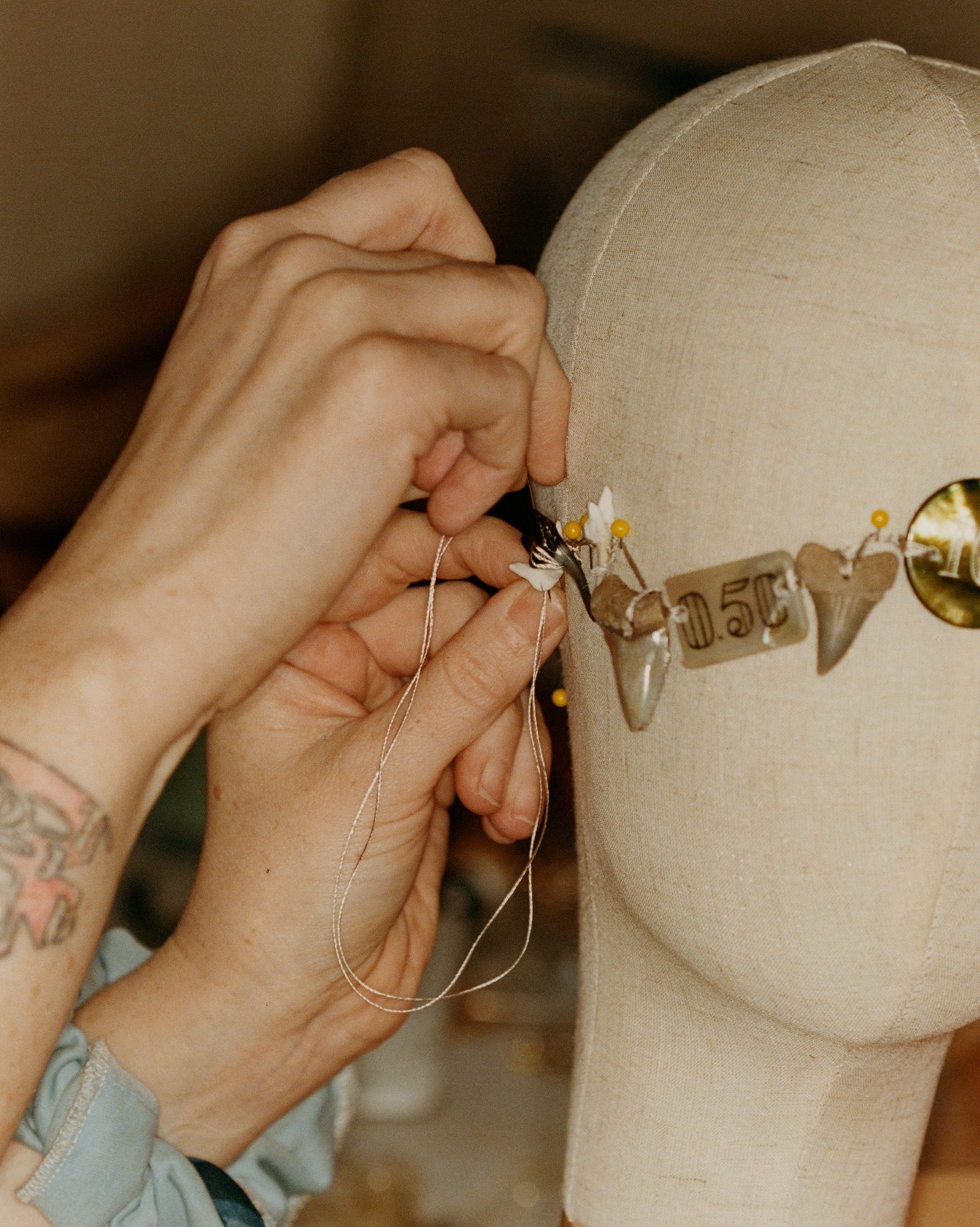Mattie Barringer and Amanda McGowan are New York’s most fashionable anarchists. The duo behind radical brand and art project Women’s History Museum arrive on our video call a few minutes late. Their camera is off and instead an artwork of a medieval girl with cartoonish black eyes becomes the channel for their overlapping voices. “We’re so sorry,” they say in unison from their studio in Queens. “This week has been insanity.”
Pushing a rebellious vision of femininity since meeting at NYU over a decade ago – where they joke they were both “losers and didn’t know anybody” – theirs is a world where chaos and imagination rule over practicality. We’re meeting to discuss the duo’s second show on the official New York Fashion Week calendar. It’s taken the pair til 2024 to join the party, though they’ve been hosting off-schedule theatrics since 2014. These homespun affairs have seen close friends and the city’s most disruptive artists – from Gogo Graham to Fashion – take on animalistic personas, skulk under bridges with kohl-smeared eyes, and cut their way out of paper houses with kitchen scissors to appear on the runway. Now, they want to shake things up from inside the machine.
Unveiled at The Church of the Village in Manhattan yesterday evening, the SS25 show offered up something like a prayer for protection. Skewing angelic lightness with a subversive kind of grit, models took on demi-god personas in looks that were tender as they were tough. The Fifth Element-esque white unitards were followed by low-slung vinyl shapes worn with towering stilt heels, while lingerie turned fantastical with one model wearing a bra with two doves in flight attached to it. The high-drama closing look saw a veil that stretched the entire length of the church floated from the rafters of the building. In true Women’s History Museum fashion, it was more like powerful performance art, than an on-schedule fashion show.
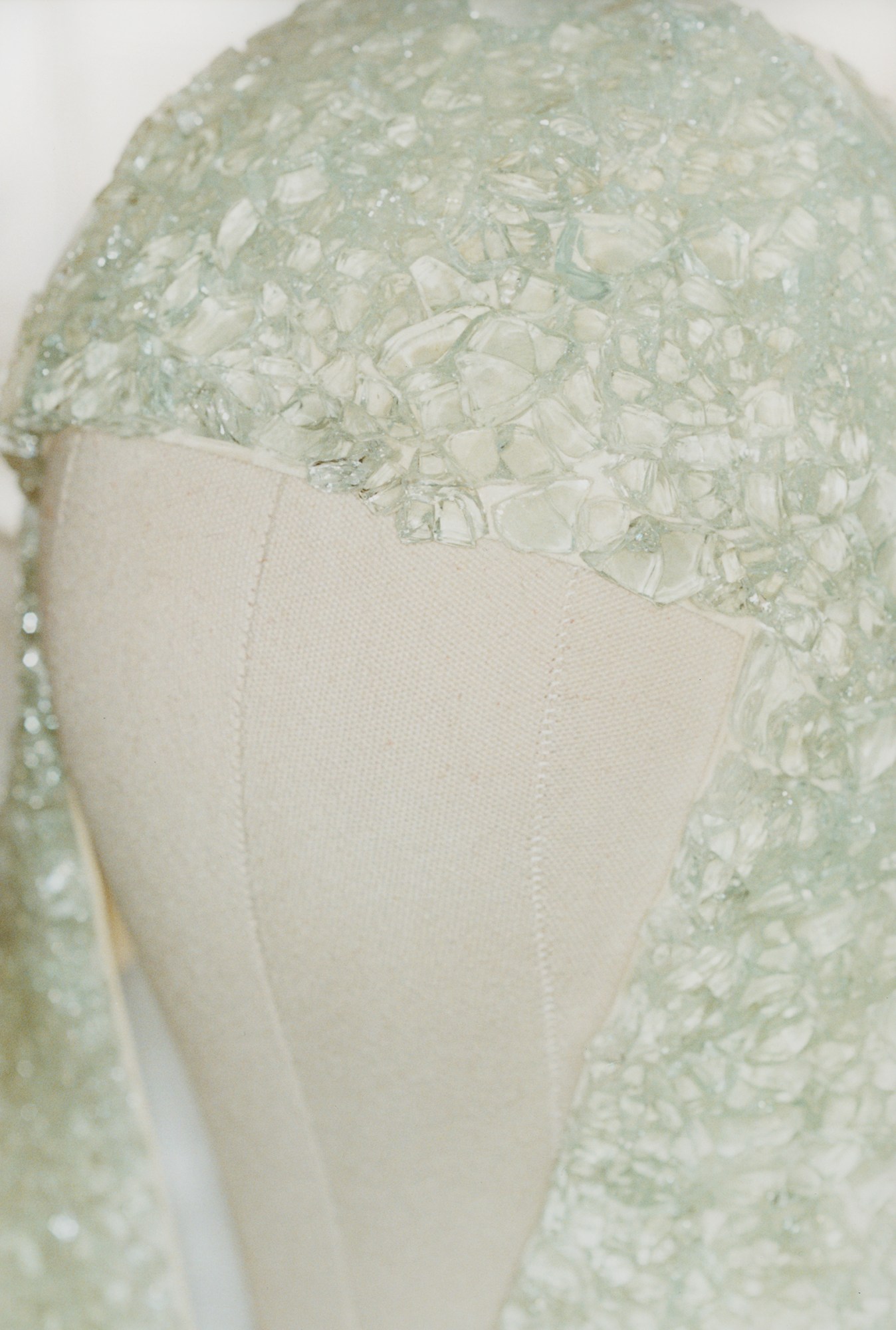
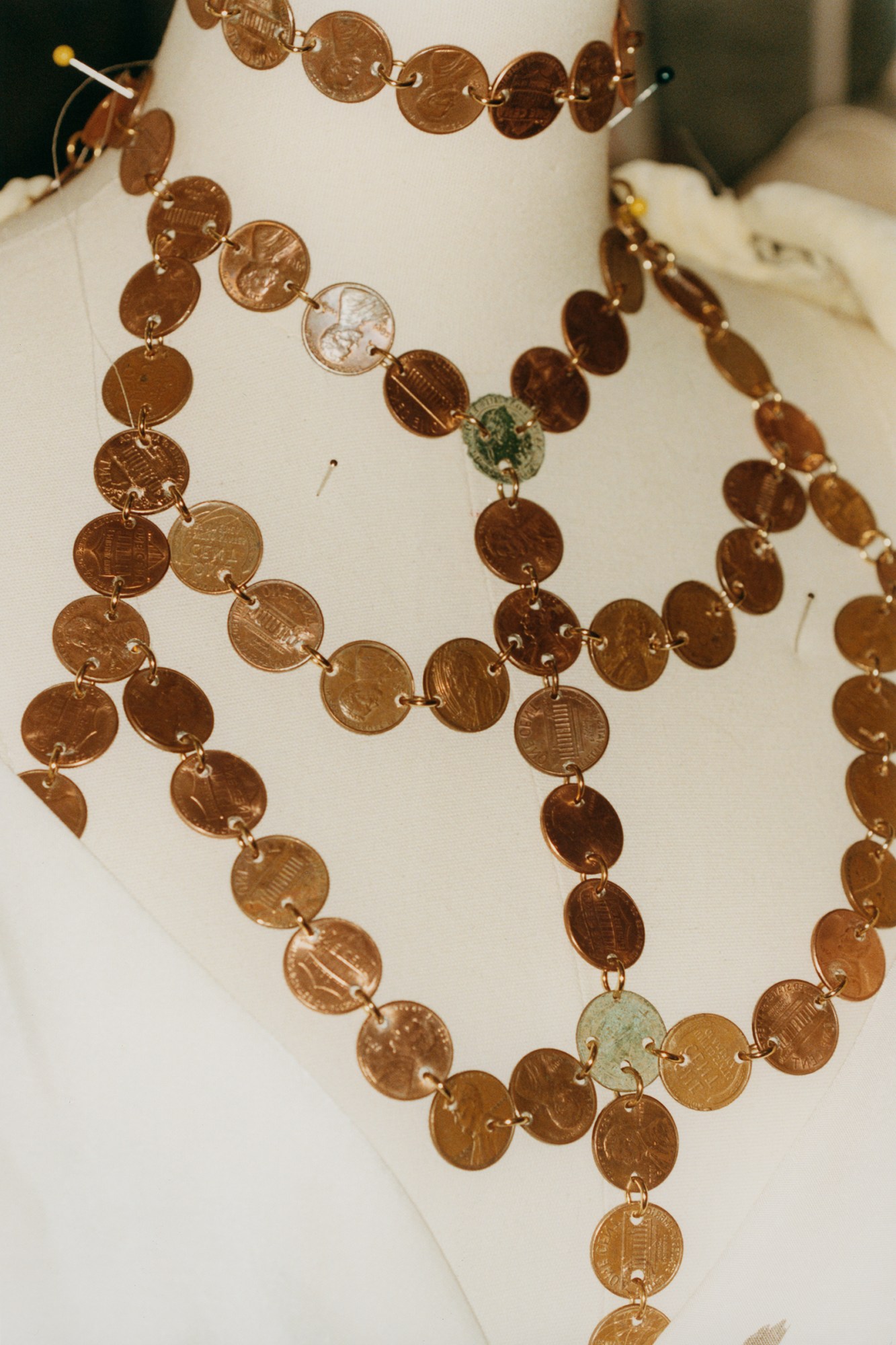
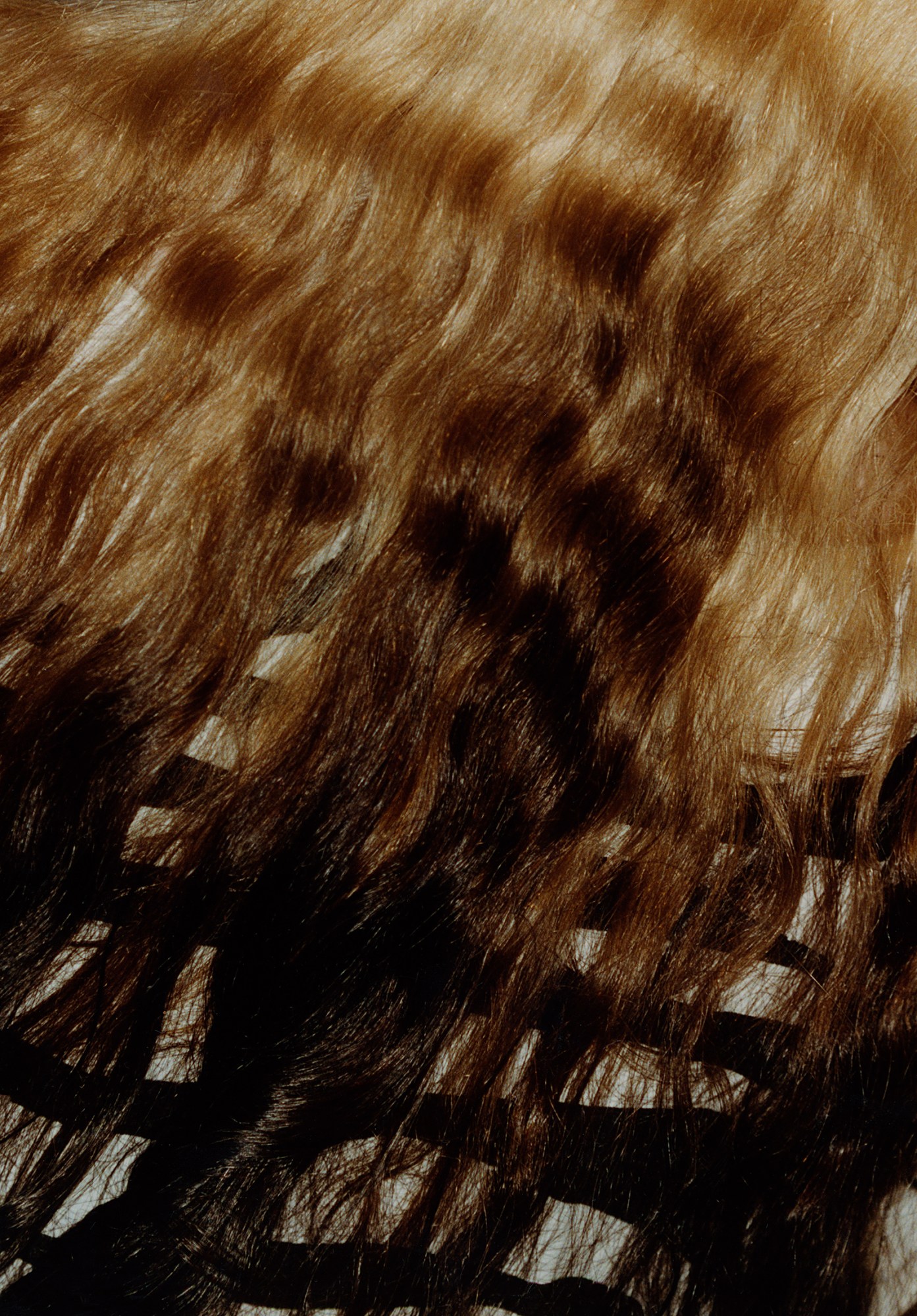
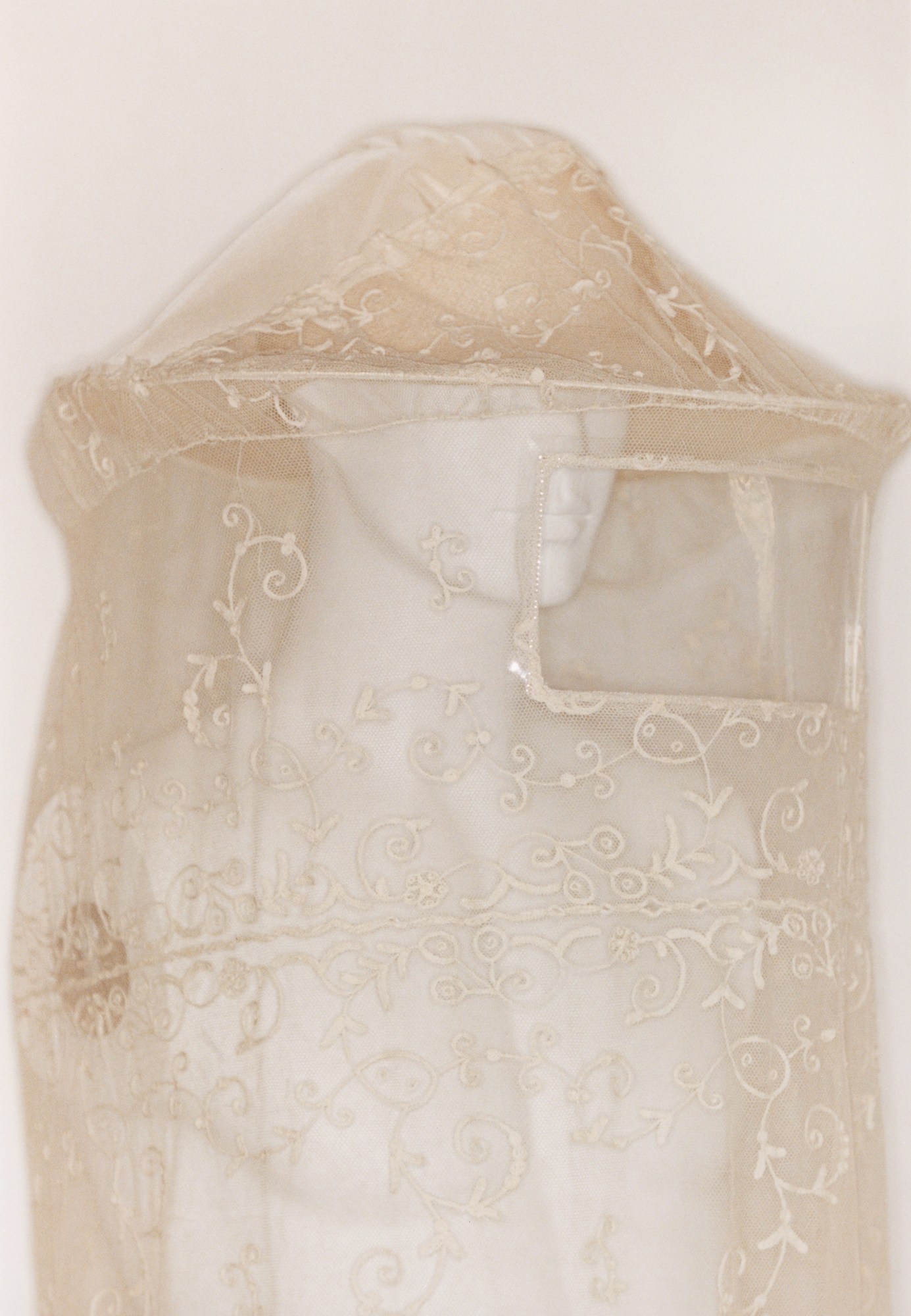




“I feel like in our opinion, New York Fashion Week has never really been very interesting because designers are forced to be so commercial,” reflects Mattie in the build-up to the show. “We love the people of New York and the fashion of real people, not the Donna Karan, Calvin Klein, hyper-commercial image of what New York is. People aren’t getting to see the creativity or the grit and talent that’s here.” It’s true that the city’s infrastructure has alienated many young designers, with studio prices on a par with rent, while some of its most exciting talents like Vaquera and Peter Do have upped sticks to Paris. Despite this, Women’s History Museum is determined to keep their underground highjinx in the place where they began – at least for now. “Maybe it’s because we’re contrarian people, but now we also want to say that we can do it here.”
Despite their deep affection for the city, the pair are acutely aware of how intense things are in New York at this moment, with skyrocketing inflation and a mental health crisis in the streets. Their AW24 show, Enfer, which translates to ‘hell’ in French, presented both a love letter to New York and a sharp criticism of it. The clothes were sexy and strange, taking the notion that New Yorkers are a different breed to new extremes. Themes of aggression ran through a series of berserk handmade designs, where antique boxing gloves morphed into brass taloned high heels; gowns with peekaboo ass cutouts were hewn from towelling material; and graphic textiles were printed with words like ‘garbage’, ‘piss’ and squirming motifs of the animal most ubiquitous with the city: rats. (Giving a flavour of the duo’s dry sense of humour, this was all presented across the road from New York’s stock exchange).
“It’s kind of like a part two, or a sister show,” Amanda says of the SS25 collection. “We wanted to express the spirit of what we actually feel New York represents and a kind of pride for the city we know and love. You want that joy and that happiness but there’s also a lot of pain too. Both those emotions will be present.” While the Wall Street show was held at the altar that capitalist America worships – money – this season centred around devotion of another sort: devotion to the dream of New York as a place of possibility and boundless self-invention.
“I feel like there’s always been a bit of a Gothic element to what we do, but there’s also a votive or devotional element,” the pair say of their choice of location. “The church has these beautiful stained glass windows, some of which have been broken and replaced. It’s not like a European cathedral. It’s a little more idiosyncratic and patched together.”
The pair watched a lot of early Alexander McQueen shows in their research – in particular his 1996 Dante collection, which was shown at Christ Church in Spitalfields, east London. It was built by Nicholas Hawksmoor, who was rumoured to be a secret satanist. Forming one of the designer’s most condemning yet beautiful explorations of religious themes, it saw Don McCullin’s harrowing images of the Vietnam War printed on garments and models wearing crucifix masks made by Simon Costin.
“Mattie’s childhood drawings are women wearing little micro tops, bandage skirts and giant platforms. They all look like little bimbo ladies.”
Amanda McGowan
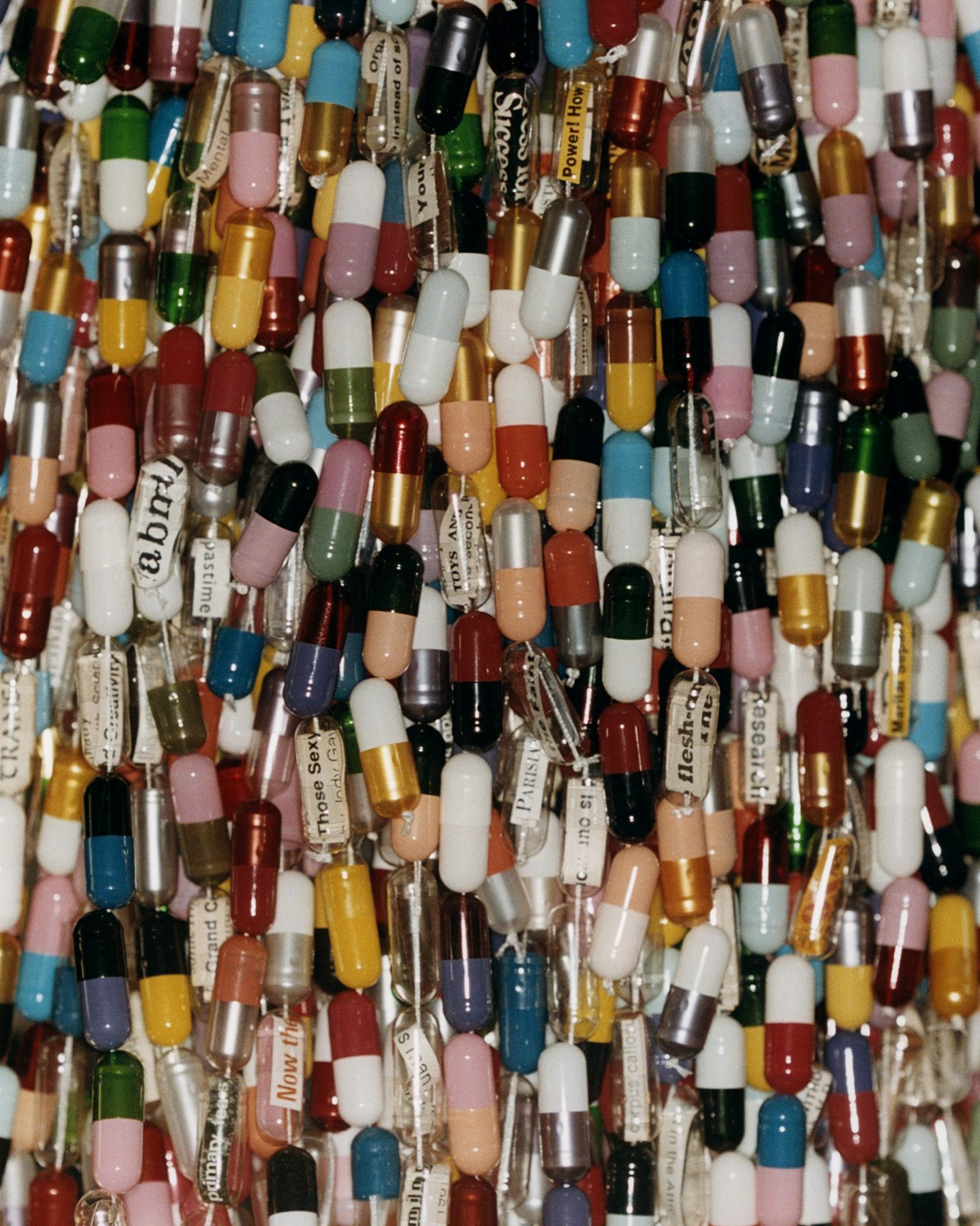
Religion is a personal subject for Amanda and Mattie, who both had conservative upbringings they later rejected after leaving home. “Amanda went to Catholic school,” says Mattie. “I grew up in what I would describe as fundamentalist religion, [essentially] Mormon. It’s a brainwashing organisation. As a little kid, you just believe what your parents believe. I only started to question things much later.”
For both designers, Women’s History Museum has been a way of shaking off the constraints put on women’s bodies, both from a personal vantage point and wider historical context. “Women in Mormonism have to wear shirts that are up to your mid-arm and underwear down to your knees,” says Amanda. “Especially with Mattie’s upbringing, I feel like you have to really react against a lot to be able to come out of that and be unapologetically yourself. But it’s interesting, because I’ve looked at her childhood drawings and they’re all of women wearing little micro tops, bandage skirts and giant platforms. They all look like little bimbo ladies.”
When it comes to the body in this collection, the duo have been thinking about ideas of revealing and ‘sluttiness’; concealment and toughness. How the act of dressing up itself can be both a form of armour and a kind of love language. “I feel like I sought fashion and clothing because I felt vulnerable and it helped me have a defence against the world, to feel protected or safe,” says Mattie. “I really do feel like it is a way to fortify yourself – especially being in New York. You feel like you’re suiting up for battle.”
As ever with the pair, ideas will be stretched to radical conclusions. This season, they have been working with salvaged objects that glitter, like shattered glass and coins, as well as natural materials of defence such as teeth and fur. “I think a lot of the materials we chose this time are wild,” they say. “Gritty but beautiful things.”

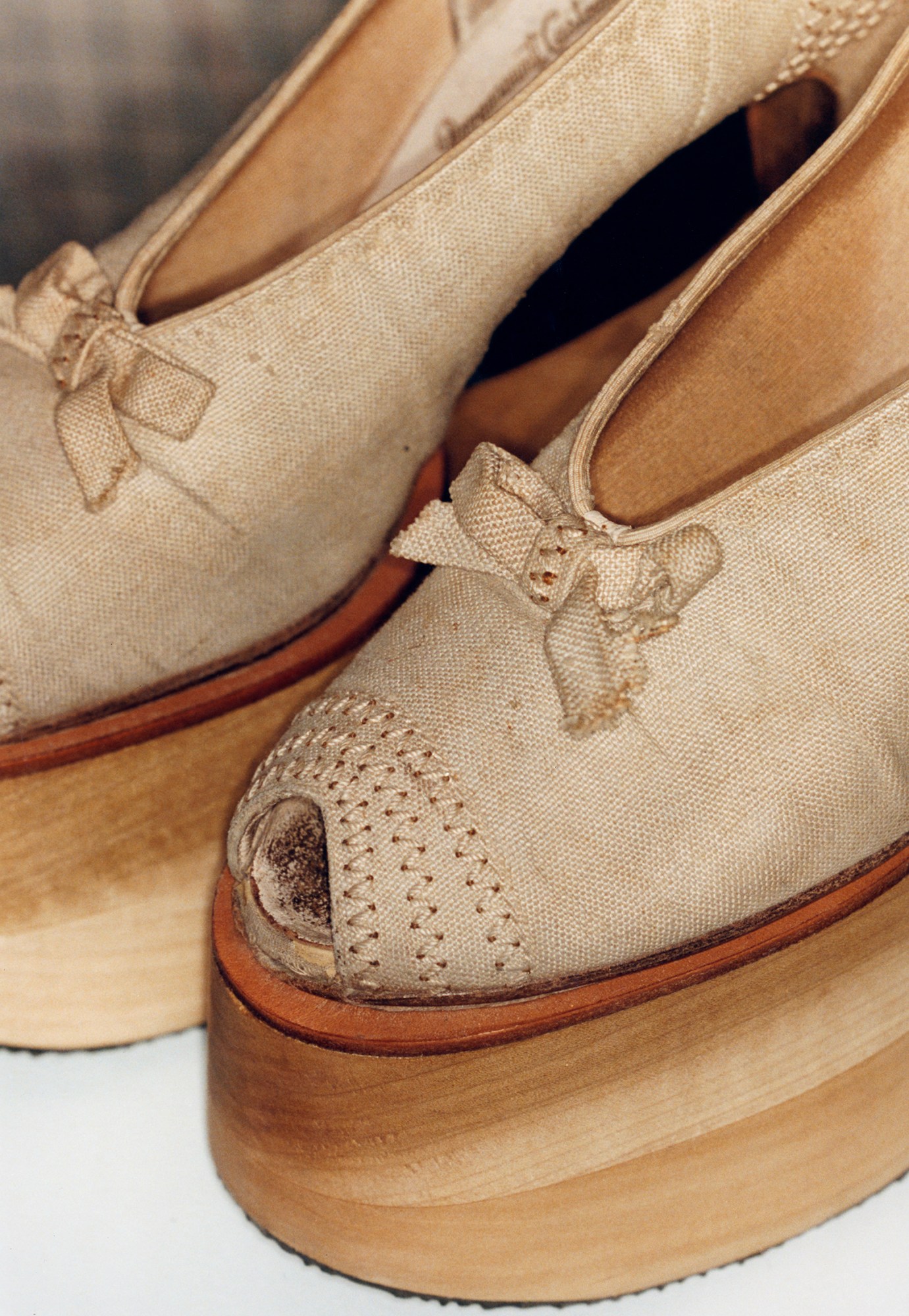
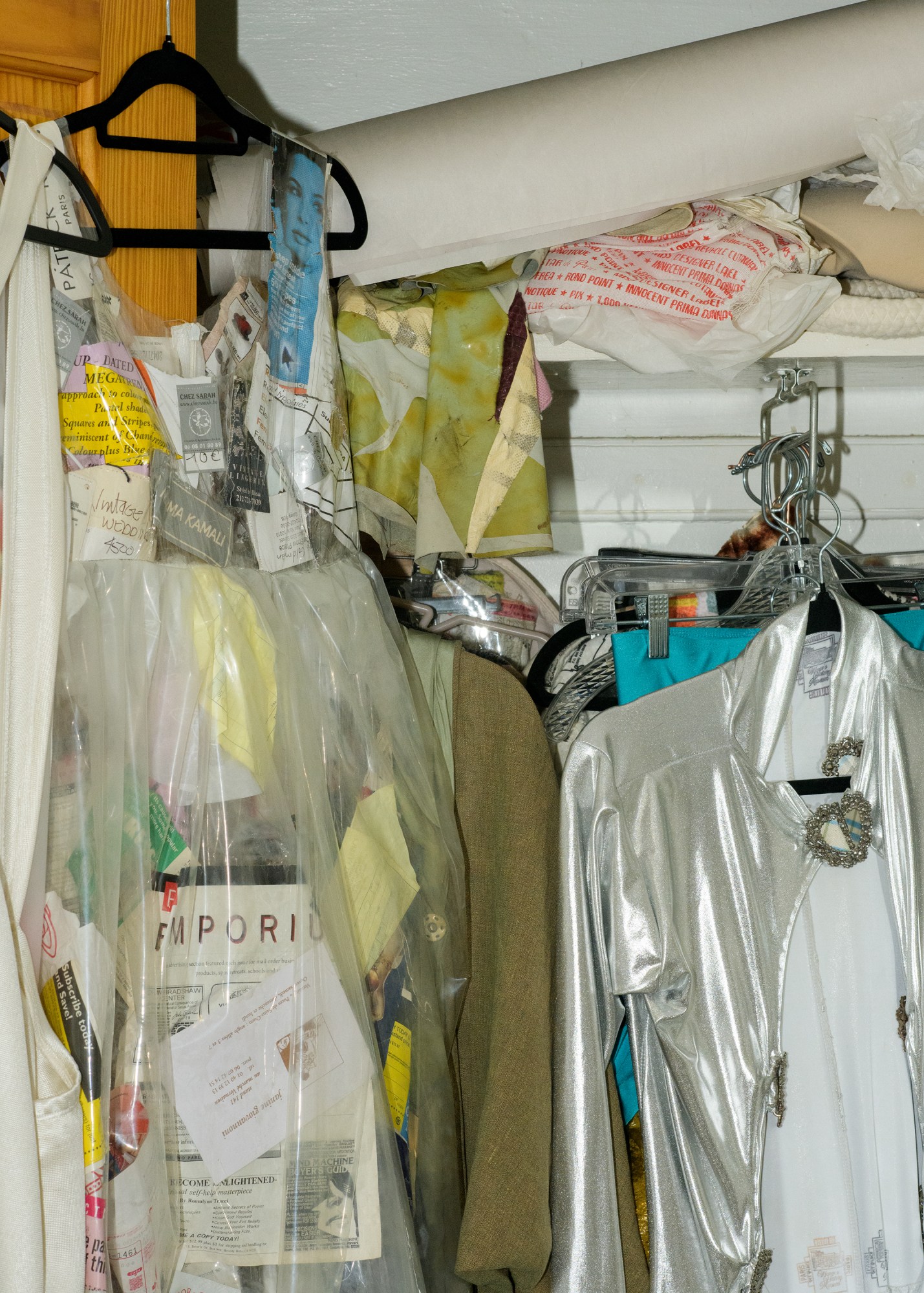





It might come as a surprise that Mattie and Amanda view their design practice as a pursuit of beauty. Frankensteining together references to historical dress, twee capitalist merch and trash-made-treasure from the street, their raw high-drama aesthetic is not for the faint of heart. “I don’t think we design with the intent to shock, but I think what is beautiful to us might be shocking to someone else,” Amanda explains. “It’s our personal style. For years, Mattie used to wear platforms every day and a full face of make-up. Although our style has gotten more toned down as we’ve gotten older, just because we’re tired and doing other shit.”
It’s true that the pair have been busy over the past 18 months. Another reason they are able to join the New York Fashion week schedule is that they quit their day jobs in 2023 to open a brick and mortar store on Canal Street, allowing them the time and resources to devote themselves fully to Women’s History Museum. A compendium of their eclectic tastes, the shop stocks a treasure trove of their own designs, antique pieces and a curation of vintage Vivienne Westwood, Bernhard Willhelm and niche Japanese fashion. “Running the store has been a lot of highs and lows, very much like New York is,” says Amanda. “But it was something that when we met a long time ago, we would have never really dreamed would be possible. So even when there’ll be a really tough couple of weeks where stuff isn’t really selling, I still feel so lucky that we’re able to do this together. It’s a joy.”
This deep appreciation for one another is how Women’s History Museum has weathered the storms of the past ten years, through their twenties, COVID and the struggles of being artists in the city. “We kind of grew up together in a way, during this really pivotal time in life,” says Amanda. “Both of us have worked through a lot of different traumas and life experiences and have learnt from each other. It’s not a normal way of being best friends, but I think our collaboration has survived because we care about each other a lot. We get so much strength from working together. That’s what’s kept us going.”
Text: Orla Brennan
Photography: Hailey Heaton
